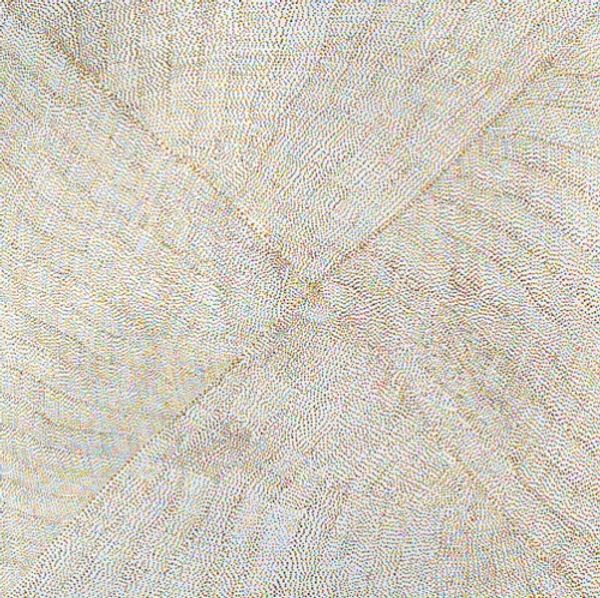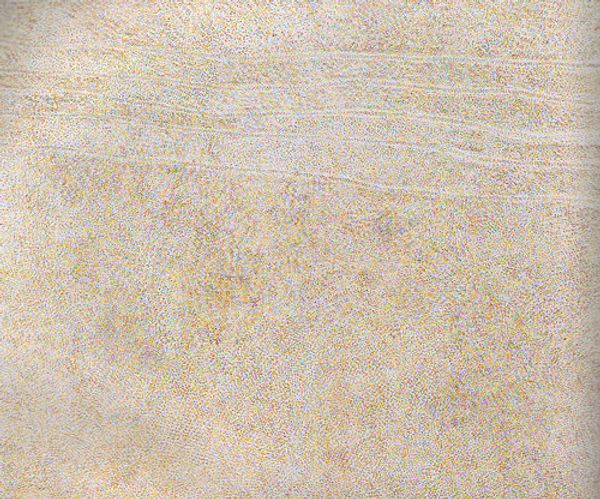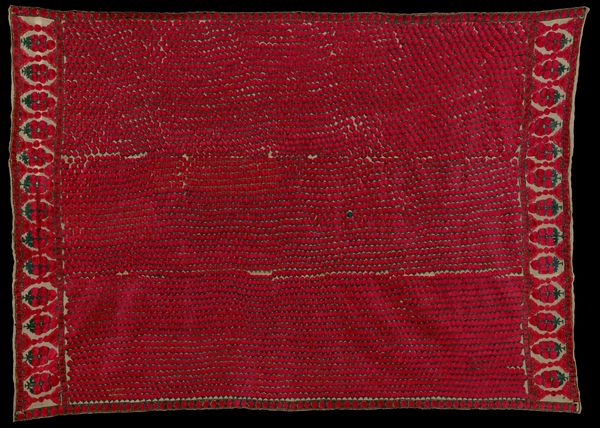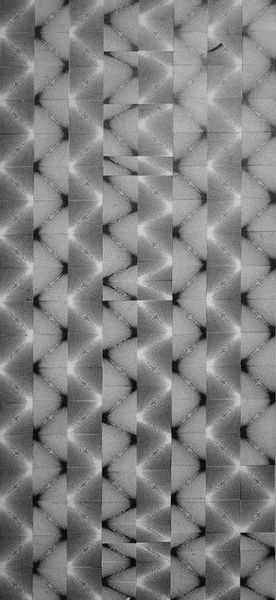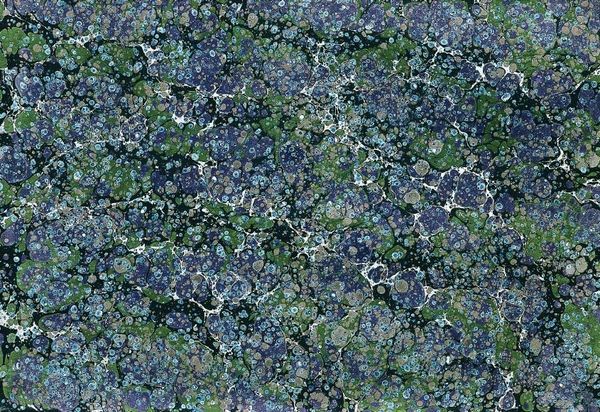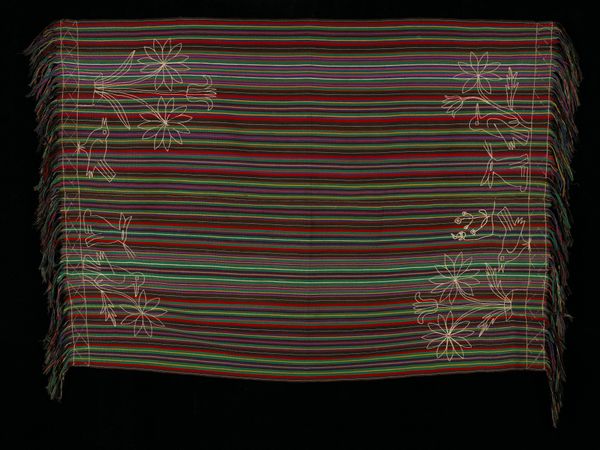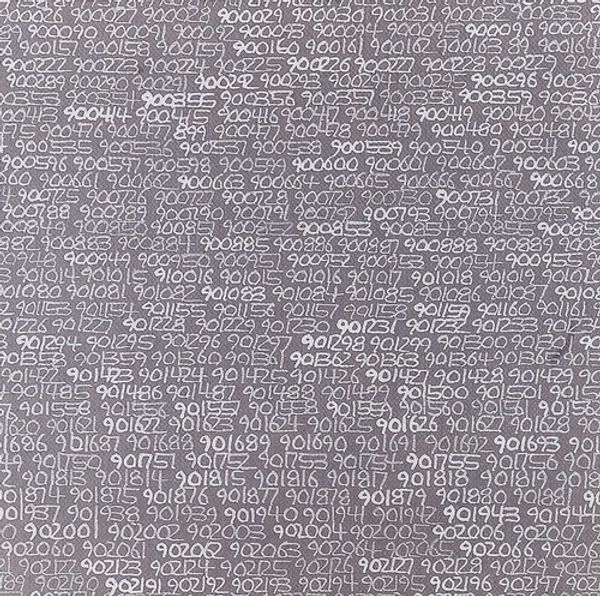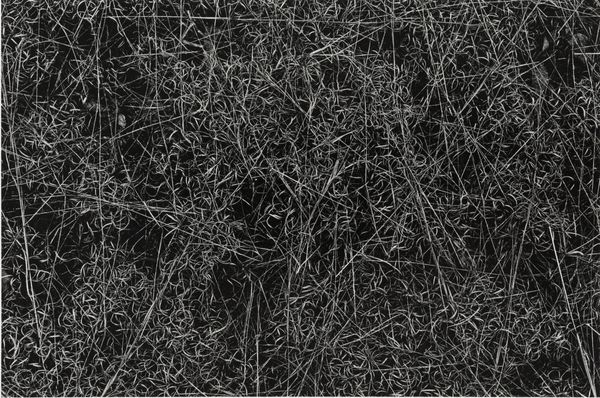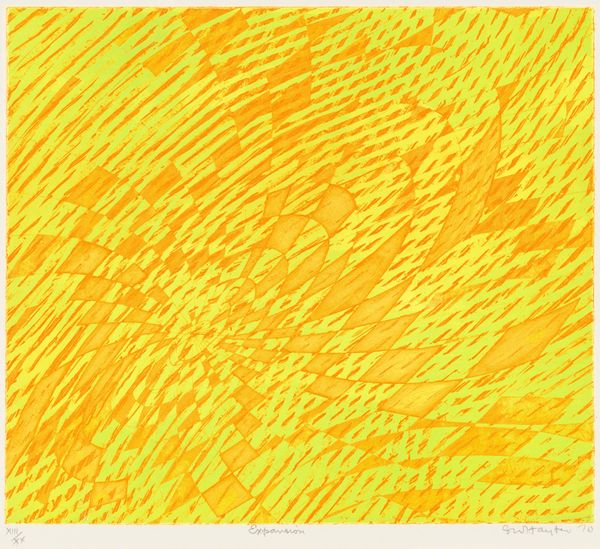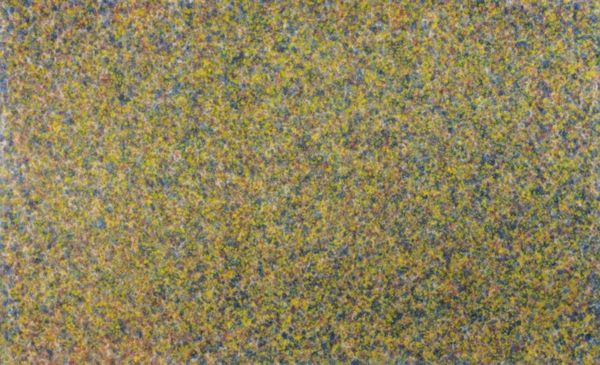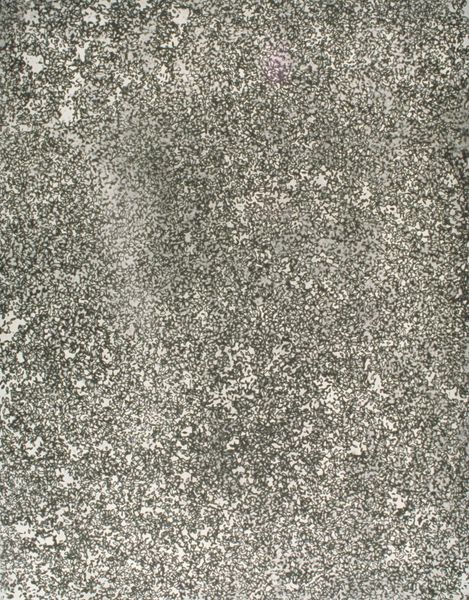
painting
#
rippled sketch texture
#
contemporary
#
painting
#
textured surface
#
geometric pattern
#
grainy texture
#
abstract pattern
#
organic pattern
#
abstraction
#
line
#
texture
#
natural texture
#
layered pattern
#
organic texture
Dimensions: 122 x 121 cm
Copyright: Kathleen Petyarre,Fair Use
Art Historian: We’re looking at “Mountain Devil Lizard Dreaming,” an acrylic painting created in 2000 by Kathleen Petyarre, an Aboriginal Australian artist. Art Historian: My first impression is that this painting is like a landscape viewed from above, everything reduced to its essence and rhythmic vibrations. It is somehow both grounded and transcendent. Art Historian: It is interesting to consider how Indigenous Australian art, traditionally tied to specific sites and narratives, is translated through a medium like acrylic on canvas, often for a global audience. Art Historian: Yes, the ‘dreaming’ narratives, complex and deeply interwoven with the land, are rendered here through a repetitive pattern of dots. Each dot might be seen as a point of connection, mapping the pathways and movements of ancestral beings. There’s a beautiful paradox here, because the abstraction invites us to meditate on the deeper symbolic structure. Art Historian: These works enter a very different economy of meaning in galleries and museums. Does its cultural context risk being lost as it becomes another artwork in the global market? The narratives become more open to interpretation outside of their intended audience. Art Historian: Perhaps, but maybe there’s power in that openness too. The imagery evokes universal experiences: journey, connection, and the vital relationship between humanity and environment. The mountain devil lizard itself carries rich symbolic weight; it represents resilience and adaptation, valuable in the face of environmental change, even social and cultural disruptions. Art Historian: But that inherent power could get fetishized; reduced into palatable visual culture which distracts from continuous exploitation faced by Indigenous Australians and their claims to land and cultural autonomy. Art Historian: True. And it raises questions: Can these abstract renderings truly transmit the cultural knowledge they intend to share, and how does the meaning shift through this transaction of viewing, exhibiting, interpreting and engaging? Maybe art gives space for dialogue, and maybe we’re seeing an invitation. Art Historian: Exactly. Viewing art needs historical sensitivity to navigate those discussions effectively and challenge unequal power relations. Art Historian: Indeed. And with attentiveness to its symbols and cultural intention, art transforms from a pretty thing into something with deeper resonance and transformative potential.
Comments
No comments
Be the first to comment and join the conversation on the ultimate creative platform.
